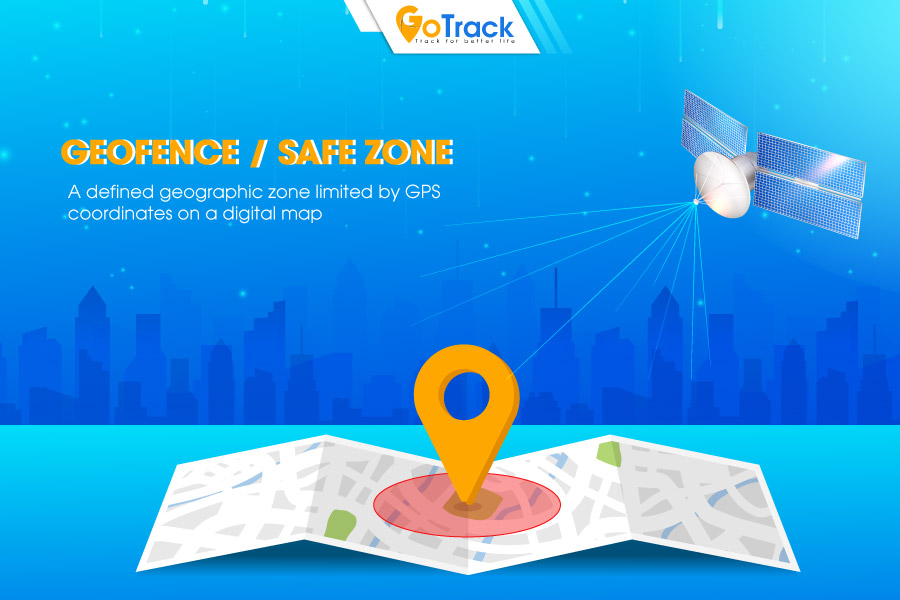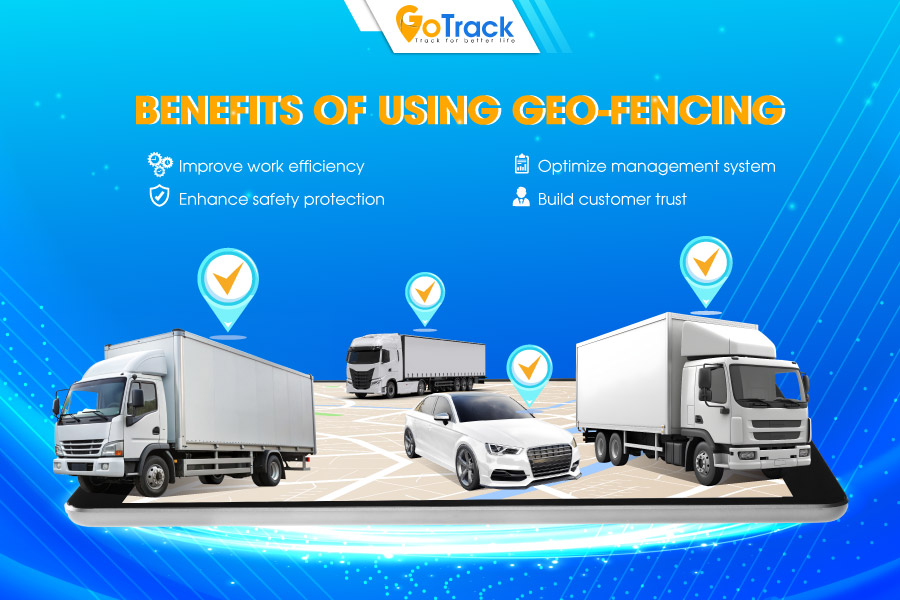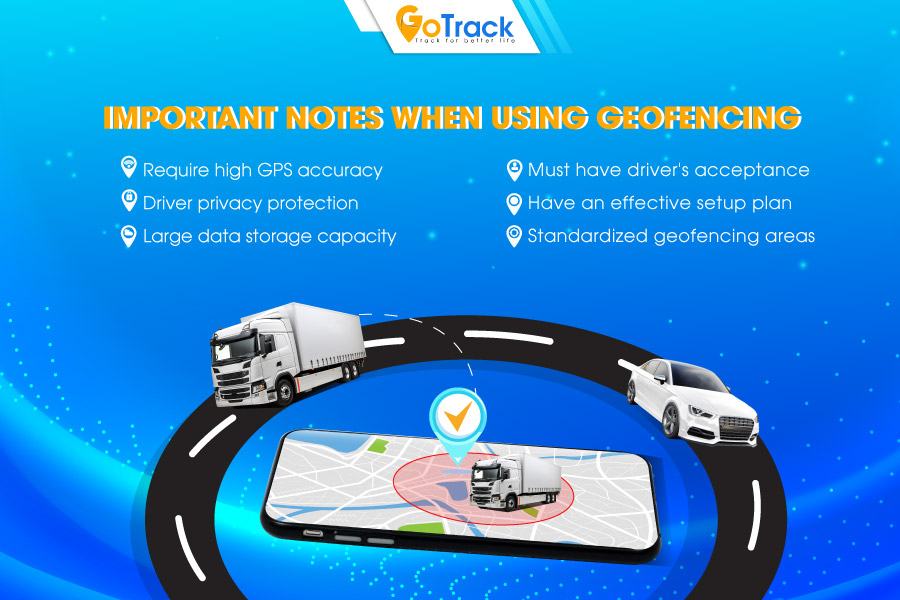The development of modern GPS tracking technology has greatly optimized fleet management with many smart and advanced features. Among them, the geofenced safe zone has become a powerful tool that helps transport businesses improve operational efficiency, minimize risks, and gain better control over their fleet’s journeys.
So, what exactly is a safe zone, and how is it applied in transportation? Let’s explore with GoTrack in the article below.
What Is Geofencing?
A geofenced safe zone (Geofencing) is a virtual area defined and bounded by GPS coordinates on a digital map, corresponding to a real-world geographic location. When a vehicle equipped with a tracking device enters or exits this zone, the system detects it and automatically sends alerts to the manager.
This technology is widely used in many industries, especially in transportation, thanks to its ability to create an “invisible fence” that allows managers to monitor routes and vehicle activities effectively.

For transport businesses, safe zones can be set up around warehouses, parking lots, construction sites, schools, pick-up and drop-off points, and delivery hubs. By using fleet management software combined with tracking devices, businesses can:
- Monitor vehicle entry/exit times for designated zones.
- Reduce risks of theft or misuse of vehicles.
- Optimize fleet costs within predefined routes and areas.
How Do Geofenced Safe Zones Work?
Geofencing technology utilizes GNSS (GPS, GLONASS, GALILEO), Wi-Fi, and mobile data, combined with fleet management software, to create and monitor virtual boundaries. Managers can configure the shape and size of these zones on a digital map in various formats such as circles, squares, quadrilaterals, hexagons, or polygons.
When a vehicle with a tracking device crosses the boundary, the system will detect and automatically trigger pre-set actions, such as:
- Sending alerts to users and managers.
- Recording position and time data.
- Automatically storing information in journey reports.
Thanks to this, transport businesses can easily monitor vehicles, ensure operations follow the plan, and reduce risks of asset loss or route violations.
Benefits of Geofenced Safe Zones in Fleet Management
Applying geofencing is not just about setting up a “virtual fence” to monitor vehicles; it is a comprehensive solution that helps transport businesses operate more efficiently. From securing assets, monitoring routes, to cutting operational costs, geofenced safe zones offer practical benefits that allow managers to be more proactive in every situation.
- Improve fleet productivity: Safe zones automatically track arrivals and departures, optimize routes, and reduce idle time.
- Enhance safety and security: By detecting unauthorized movements or theft, businesses and vehicle owners can take immediate action to minimize asset loss.
- Reduce fleet costs: Monitoring travel ranges helps eliminate unnecessary mileage and misuse, saving fuel and maintenance costs. It also allows for better fuel cost forecasting per trip.
- Strengthen management and decision-making: All data is recorded in detail and accuracy, enabling managers to analyze performance and identify issues that need adjustment. This provides a solid basis for making flexible, effective business decisions.
- Build customer trust: Accurate tracking of delivery progress enables businesses to proactively update customers, boosting confidence and enhancing brand reputation in the market.

Key Considerations When Using Geofencing
Before implementing geofenced safe zones, it’s essential to understand both their benefits and potential challenges, such as:
- GPS accuracy: Signal interference in tunnels, urban areas, or remote regions can affect location precision.
- Privacy concerns: Vehicle tracking may raise driver privacy issues, so clear and transparent policies are necessary.
- Data usage: Continuous tracking increases data consumption and requires strong mobile network coverage.
- Driver acceptance: Some drivers may hesitate with increased monitoring, requiring proper communication and training.
- Clear setup plans: Geofence boundaries and rules must be carefully planned to avoid errors and ensure accuracy.
- Regular updates: Adjust geofences as routes, customer locations, or operating areas change.

By addressing these factors early on, businesses can establish geofences that effectively support their operational goals while avoiding unnecessary complications.



